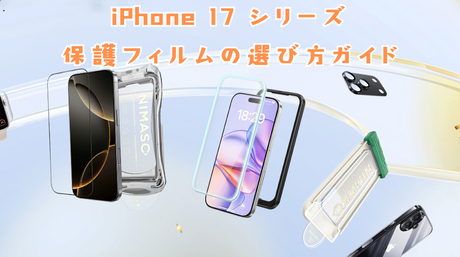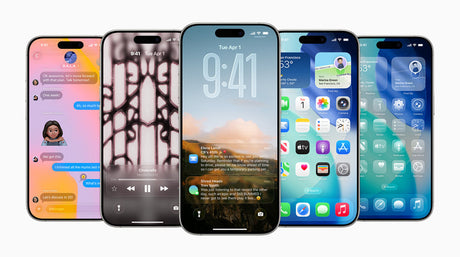Introduction
Have you heard of glossy anti-reflective glass film? In this article, we'll explain AR coating (anti-reflective film). Let's get straight to the point and explore what effect AR coating technology, which reduces light reflection, has on the screen and what its benefits are!
🎟 Special Discount Now 🎟
Get 10% off with our special code!
✅ Copied!
table of contents
What is AR coating (anti-reflection coating) and what is it used for?
We recommend NIMASO AR anti-reflection glass film.
・Summary of recommended points
What is AR coating (anti-reflection coating) and what is it used for?

AR (Anti-Reflection) coating, also known as anti-reflection film, is a coating that reduces light reflection from the substrate surface and increases transmittance. It is abbreviated as AR.
AR (Anti-Reflection) coating is a processing technology that applies a thin film of material with a different refractive index to the glass surface, changing the light transmission characteristics and suppressing light reflection. It is usually produced using two processing methods: dry and wet.
By using AR coating, reflections can be prevented and the reflectivity can be reduced to around 0.5% to 2% even when the angle of incidence is 0 degrees.

NIMASO Anti-Glare Tempered Glass Film for iPhone 16/Pro/Pro Max with Black Border and Automatic Dust Removal Guide Frame (2-Pack)
NIMASO's unique anti-reflective coating reduces glare from sunlight and fluorescent lights, making the screen easy to see even during extended use and ideal for preventing smartphone fatigue and eye strain.
Usage :
AR coating is usually applied to materials such as glass, PMMA (acrylic resin), PC (polycarbonate resin), and PET (polyethylene terephthalate), and is used in glass plates, LCD panels, optical lenses, astronomical observation, etc. AR coating is also found in everyday items such as eyeglass lenses and computer displays.
AR (Anti-Reflection) coating is a processing technology that applies a thin film to the glass surface that changes the light transmittance, reducing reflectivity to around 0.5% to 2%, thereby improving the clarity of smartphone screens.
AR anti-reflection glass film
·merit
Prevents light reflection, improves transmittance, and makes the screen easier to see
Light is reflected at the interface between a material and air. Glass allows light to pass through, but when light passes through glass, approximately 4% is reflected from the front and back surfaces, for a total of approximately 8%. This causes reflections and glare.
AR coated glass film reduces light reflection and improves transmittance, reducing glare and glare. It also minimizes light reflection, ensuring clear and easy viewing of the screen.
Refractive index
How exactly do you want to reduce it?

 Quote: geomatec, eenah
Quote: geomatec, eenah
Regular protective glass films have a transmittance of approximately 92% and reflect 8% of light . Glass films with AR coating have a transmittance of approximately 95.5%-99%. Glass films with AR coating on one side reflect approximately 4.5% of light , and glass films with AR coating on both sides reflect approximately 1% of light .
In other words, AR-coated glass film can reduce light reflection by up to 80% .

NIMASO Anti-Glare Tempered Glass Film for iPhone 17/Pro/Pro Max/Air with Automatic Dust Removal Guide Frame (2-Pack)
[Reduced reflection and improved visibility]: NIMASO's unique anti-reflective coating effectively reduces reflections and glare from sunlight and indoor lighting on the screen.
We recommend NIMASO AR anti-reflection glass film.
・Image of the implementation effect
Say goodbye to glare with AR coating technology for a clearer view
▼AR coating/anti-reflection & improved transmittance▼
AR coated vs. uncoated


・Summary of recommended points


▼Outdoors or indoors▼
Reduces light reflection and is gentle on the eyes!
The screen clarity remains the same, allowing you to comfortably focus on your smartphone!
▼ "AR coating + AF oil-phobic layer" ▼
Not only does it prevent reflection and improve transmittance,
It feels super smooth to the touch!
▼ Multilayer structure/9H hardness▼
Excellent impact resistance, firmly protects your smartphone screen
Recommended articles:
- NIMASO Trivia: Is it really not recommended to use a privacy screen protector for your smartphone?
- What is the purpose of the black border on glass film? | NIMASO Tips
- NIMASO's new glass film loses?! It can't beat the standard product after all!?
- What is Liquid Film? What are its Effects? | NIMASO Tips
- Why do bubbles appear in glass film? What can you do about it? | NIMASO Tips
The above is an explanation of AR coating (anti-reflective film) and AR anti-reflection glass film.
Please like this! Thank you for reading!
Comments, shares, and more are welcome!
Follow us and don't miss out on points, events and the latest iPhone information!









